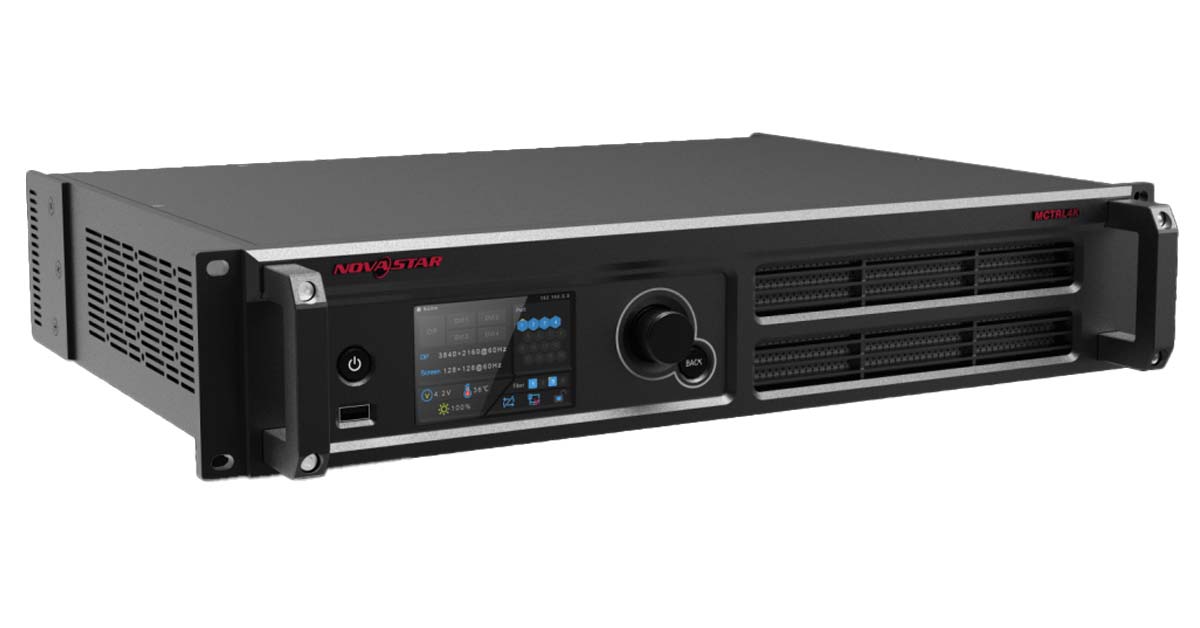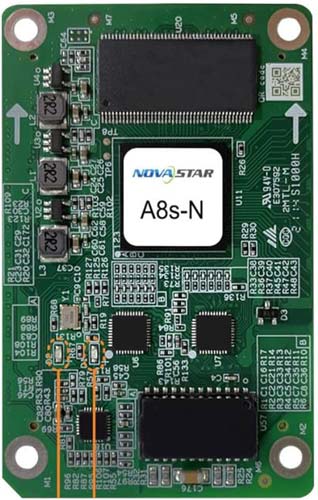LED Display Components: Receiving Cards, Sending Cards, and Configuration Files
In the world of LED displays, a captivating visual experience is the result of intricate technology working seamlessly behind the scenes. Two essential components, the Sending Card and the Receiving Card, play pivotal roles in producing the stunning images we see on LED screens. First, let’s delve into these two major components to help shed some light on the lesser known but equally important Configuration files.
Sending Cards Bridge the Gap
Within the LED processor (i.e. Novastar MCTRL4K shown below) the Sending Card acts as a bridge between baseband sources (e.g. HDMI, SDI, or DisplayPort) and the receiving cards. This component plays the vital role of “translation.” It takes the incoming data from a baseband signal and translates it into a language that the receiving card can understand. Additionally, one of the Sending Card’s key responsibilities is transmitting crucial files. These files are generally referred to as configuration files which we will dive into later.


Receiving Cards Power the Pixel
Imagine an LED display as a mosaic of pixels, each contributing to the overall image. At the heart of every tile within the display resides a Receiving Card. This small yet mighty component plays a critical role in distributing the data necessary for pixel perfection. Its primary function is to take the data transmitted by the Sending Card and distribute it to the LED modules utilizing the .rcfgx configuration info, ensuring every pixel contributes to the coherent whole. The receiving card will receive, decode, and distribute data like color temperature, luminance, and X-Y coordinates of each pixel to display them accurately across each module. In essence, the receiving card orchestrates the symphony of pixels to create a visually appealing and unified image on the LED display.


Configuration Files Define the Brilliance
At the core of LED display magic lies the configuration file. This file encapsulates all the intricate settings required to fine-tune LED tiles for optimal performance. Configuration files bring uniformity and precision to each tile, enabling them to seamlessly mesh into one captivating display. Bottom line, the configuration files define how the tiles will behave in relation to the sending card’s data. The configuration file will determine settings like color temperature, luminance, and X-Y coordinates, among other ancillary information. Think of them as a blueprint that lives on each panel that ensures tile uniformity across a batch of panels– they ensure that each tile plays its part harmoniously, resulting in a visually cohesive display.
In the world of LED displays, the Receiving Card, Sending Card, and configuration files work in conjunction to transform technology into captivating visual spectacles. Understanding each of these individual components will help shed some light on the under-the-hood magic that goes into creating seamless LED displays. Nationwide Video has a wide variety of LED available for rental or purchase as well as a knowledgeable team standing by to support you with any questions. To get started on your LED rental or new tile purchase, give us a call at 800.935.2323 or an email at info@subrent.com.

